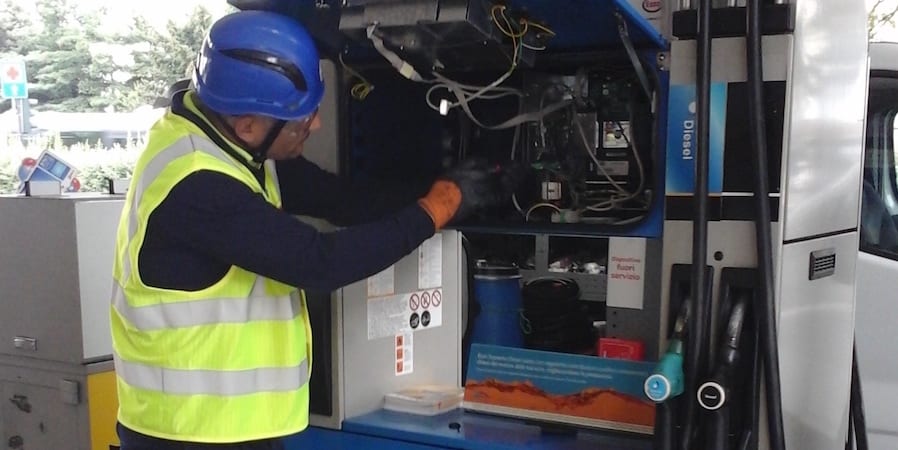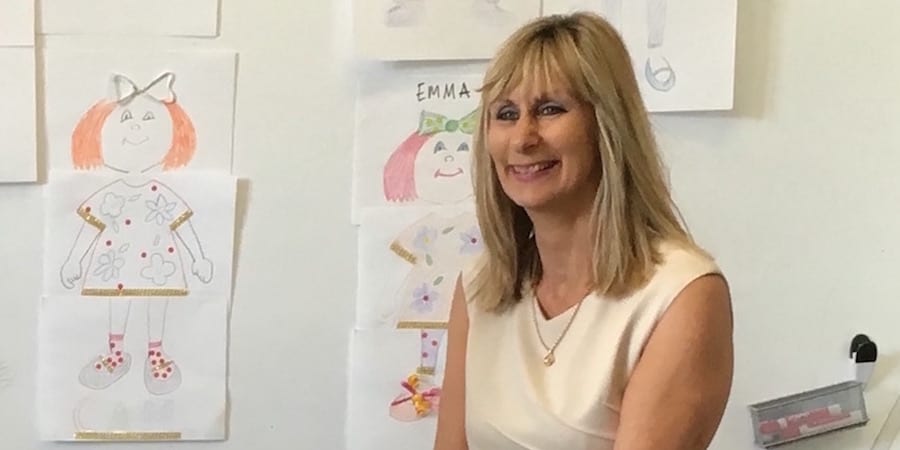
Focusing on problem solving at the front line
FEATURE – When market changes caused operational problems in their firm, two top managers decided to stick to lean thinking (and a set of specific practices) – learning to focus on what truly matters and letting their people embrace problem-solving.
Words: Fabiano Clerico, CEO, and Furio Clerico, COO, Tokheim Italia
As the leaders of a €50 million sales and service company, we are very aware that some questions are ours to answer, and ours only: what value does the company provide, and to whom? What advantage do we offer our customers compared to our competitors? What kind of a company do we want to be, and in which way are we unique? Who does that make us today, and who do we want to be tomorrow?
The truth is that these important questions might never be answered, because the pace of change in our industry often outstrips our ability to change operational processes. Just as we think we have figured out part of an answer, something new happens that pushes us back to square one – back to asking ourselves the same things over and over again.

Five years ago, the greatest part of our business was done with major corporate clients and our main point of contact was the Purchasing Department, with negotiations essentially focused on price and quantitative terms of service. As a result of rapid divestment of the majors from this industry, we now do the same overall turnover but with a majority of independent clients, who value a personalized experience and reactivity far more than they do standard service and audits. As you can imagine, pivoting the company to adapt to this new kind of business model is no walk in the park.
Our sensei often asks us: "Have you done at least one hour of 100% value-added work today?" And then: "Does anyone in the company have the means to achieve 100% of their scheduled work?" These are tough questions. From the boardroom, our problem was both simple and impossibly hard: on the one hand, we needed to keep the company as stable as possible to continue to operate service contracts day in, day out without major disruption and, on the other, we needed every one in the company to be in contact with customers, from field technicians to sales representatives, to acquire new skills and adopt new attitudes towards the work to be done.
Trying to deliver such large-scale change drove us straight into the wall of urgent operational problems. We were aware that a critical part of our success depended on our ability to relentlessly and continuously explain what we were trying to do, but we still hit every problem in the book:
- We didn't understand the resistance we were receiving from our staff directors, who had their own functional ideas of what would be best for the company;
- Line managers found it difficult to simultaneously operate in the old way to service existing contracts and explore new ways to develop new business, which led to confusion, difficulties and missed opportunities;
- Perplexed front-line technicians struggled to understand exactly what was expected of them, which part of their work would remain the same, which would be different, and why or how they should get involved in this.

Not surprisingly, we quickly found ourselves submerged with these "urgent" operational matters, which needed to be resolved. At the same time, we were fundamentally distracted from our real jobs of answering the deep questions and repeatedly explaining and motivating our teams on what we were trying to achieve.
In this context, we believe our lean practice was the key to our success in turning the company around. Over this period of upheaval, not only did we succeed in maintaining our overall turnover, but we also increased our EBITDA by 70%, due to our kaizen results in reducing finished good inventory by 50%, maintenance spare parts by 30%, and technician van stock by 35%. We halved the square meters occupied by finished goods and spare parts on all of our five distribution centers and reduced the sales delivery lead-time from eight weeks to six weeks and the spare-parts delivery lead-time from fifteen days to five days. Our on-time intervention record grew from 80% to 95%.
In particular, we can highlight six key practices that had a deep impact on the way the company worked:
- Customer gemba visits: staying in touch with customers one by one. By following a regular schedule of visits at customer sites we can connect with individual customers and see the facts for ourselves, therefore creating an opinion independent from that of our middle managers. This also helps us realize to what extent our management structure remains intent on delivering a generic service and finds it difficult to adapt to personalized customer demands – or indeed hear the requests for what they are. This remains one of our key challenges.
- Parts procurement just-in-time effectiveness: not letting tactical issues frame policies. By accelerating the flow of service parts step-by-step, reducing order quantities, simulating the needs monthly and guaranteeing service to our technicians, the collaboration between dispatch, technicians on the road and center-based personnel has greatly improved. This, surprisingly, has simplified many of the other complex problems of the business as fewer logistical snafus escalates to full-blown problems and people learn to solve issues concretely as they appear.
- Technical "dojo" training: refocusing on the job one person at a time, on what needs to be nurtured and what needs to change. As the technicians are always on the road, looking at the reality of their work can be hard to do. First, we asked managers to regularly ride shotgun for a day to see how the work really presents itself, and then we created dedicated rooms for training, with a regular training plan for each technician. At first, we focused on rare or exotic operations, but we realized there was more to learn from the most frequent operations instead. This way, we were able to narrow down needed changes of practice. This also opened the way to limited cross-training between specialties to reduce the number of unnecessary trips to customers.

- Daily problem solving: continuously establishing the line of sight between personalized customer value and solving obstacles in our own processes. Team leaders are asked to look into a customer or technician field problem daily. The idea is not to take all problems out of our processes, but to learn to better explore problems and solve them. They look into the problem formulation, cause investigation, countermeasure initiative and what the results were. This practice allows us to continually check with our staff the clarity of the understanding of the value we intend to provide to our customers and how this translates into every-day work decisions – mostly mundane problems such as ordering rare parts in express although it might be more costly, or billing issues and so on. Being able to discuss in concrete terms and pragmatic cases the attitude shift we expected has helped us tremendously in communicating our new strategy on specific instances and without boring people with vague messages.
- On-going team kaizen: developing team ownership and confidence and encouraging teams to keep trying harder. In the end, the people themselves solved most of our problems. At strategic level, we knew what kind of reorientation we sought in order to be able to survive the industry's restructuring. But most of the process-level solutions were found by the teams themselves in each center as they conducted kaizen after kaizen and discovered new ways of working. They found clever ways of better responding to customer issues, whilst simplifying our own internal process (sometimes with astonishing results). Our Milan center, for instance, moved to a new location with half the surface (creating a quarter of the cost) and still feels less crammed than our old facility – simply as a result of on-going kaizen by the teams themselves.
- Suggestion system: accelerating the flow of ideas and recognizing each person's contribution. With 98% of suggestions realized, we're quite proud of how our people have taken to making suggestions. Probably one of the hardest things to do as leaders is to connect directly with those who do the job – and ultimately pay our wages. It's hard to sift through the experience and biases of our own management structure to know who is most skillful at what, or who is more hard-working and when. Therefore, it is also hard to motivate people through recognizing their efforts in different situations – maybe some have genuinely easier conditions than others or specific difficulties, and we, from the boardroom, will never know. By teaching our middle managers to support the suggestion system and by systematically highlighting a suggestion-of-the-month in each of our centers, we have been able to cut through some of the fog and start recognizing the real contributors to the business – not all of them were who we initially thought, and certainly not all of them were the most visible people. Celebrating suggestions has allowed us to not only accelerate the flow of ideas throughout the company, but also to have a much clearer understanding of which teams work well, with open, friendly atmosphere and easy initiatives, and which teams remain problematic and not-so-great places to work. We rarely have off-the-cuff solutions, but at least, thanks to the suggestion system, we now have a much better understanding of the managerial situation in our very widespread activities.
Focusing on on-going problem solving has shifted the onus of finding solutions to the teams and front-line managers themselves and, surprisingly, we've become more prone to ask questions rather than give answers. We've realized that to run the business we don't have to know how to solve every problem, but we do need to deeply understand the issues in every aspect of our whole business, from the customer end of the supply chain to relationships with our suppliers.
Asking questions has turned out to be an even greater way of communicating the large changes we're trying to make happen by developing the business' capabilities (which, really, means the sum of individual competencies). And, more, back to our earlier point, asking questions rather than dictating answers also helps us to keep our heads at the strategic level (where they need to be). "What value do we intend to provide and for whom?" "What kind of company do we want to be and with whom?" These are now some of the existential questions we are in a position to try to answer.
To read more about the lean journey of Tokheim Italia, click here
THE AUTHORS


Read more



INTERVIEW – Is “lean fire-fighting” an oxymoron? It isn’t if you are the Grand Rapids Fire Department, which has not only turned itself around but is also leading a city-wide lean transformation.


PROFILE – This month we meet another member of the lean community, a true pioneer of lean thinking, who contributed to introducing the methodology in Australian cities and healthcare organizations.


ROUNDUP – In the last roundup on lean tools and concepts of the year, our editor collects and curates the best articles on strategy deployment (hoshin kanri).


OPINION – What happens when a senior executive jumps the fence and finds himself having to drive the very same change he was asking others to create?

